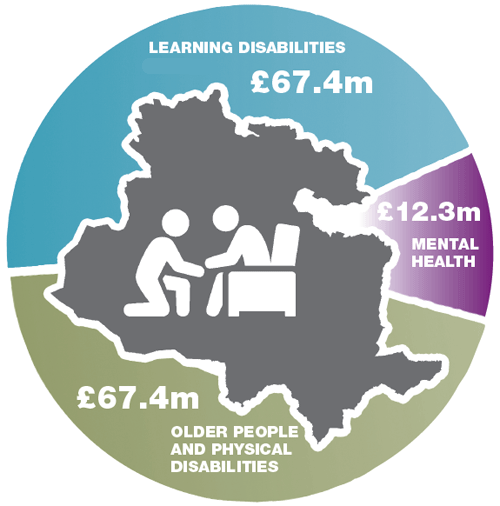
Current demand
Return to the MPS home page | Go to previous page | Go to next page
Our population

Bradford was crowned the UK City of Culture 2025 for its diverse population, rich culture and heritage which has been recognised as a symbol of strength and great pride. Bradford has one of the highest ageing populations as well as an increasing number of people with learning disabilities, autism and mental health diagnosis. Bradford also has one of the youngest and fastest growing populations in the United Kingdom. This is factored in when understanding the support needs of our population. This page provides a summary of the key population, economic and health and social care information. Further information on the current and future health and wellbeing needs of our population can be found on the Joint Strategic Needs Assessment page.
Size

In 2021 it was estimated that there were 547,000 people living in Bradford District, an increase of 0.9% since 2020. Bradford Council covers a large population; it is the 5th largest local authority area in England by size of population.
Age

The number of people aged 65 to 74 years rose by just over 11,000 (an increase of 31.0%), while the number of residents aged 4 years and under fell by around 5,100 (12.3% decrease). The health of people in Bradford is varied compared with the England average. Bradford is one of the 20% most deprived districts/unitary authorities in England and about 23.2% (29,390) children live in low income families. Life expectancy for both men and women is lower than the England average.
Growth

The number of people aged 65 to 74 years rose by just over 11,000 (an increase of 31.0%), while the number of residents aged 4 years and under fell by around 5,100 (12.3% decrease). The population of Bradford increased by 4.6%, from just under 522,500 in 2011 to around 546,400 in 2021.
Ethnicity

Bradford District is an ethnically diverse area, there are many different ethnic groups within the district including the largest proportion of people of Pakistani ethnic origin in England. The population in Bradford is predominantly white (61%), with non-white minorities representing the remaining 39% of the population.
Deprivation

Bradford is one of the 20% most deprived districts/unitary authorities in England. Bradford District is ranked 5th most income deprived and 6th most employment deprived local authority in England. 15% of the District's households are in fuel poverty. 22% of children are living below the poverty line. 13% of working age people have no qualifications. 11% of the working age population claim an out-of-work benefit.
Economy

Bradford is a big economy worth £11.6bn and is the tenth largest city economy in England. It is the third largest economy in the Yorkshire and Humber region after Leeds and Sheffield. Bradford is home to over 16,000 businesses employing around 250,000 people across the UK with a combined turnover of over £30 billion.
Our current demand can be mapped across the three tiers of support. As we work in a more strengths based way, with people being able to access early intervention and prevention offers in the community earlier and stay happy, healthy and at home for longer we expect demand to move to tiers one and two and to see more people with long term care staying in the community – we are already seeing this trend.
Our aim is to support people to have more personalised care and support and so we expect the number of Direct Payments and Individual Service Funds to increase over the next 12 to 24 months.
Estimated spend in Bradford for long term support
Our budgets for Learning disabilities, Mental health and Older people and Physical disabilities are displayed below.

Return to the MPS home page | Go to previous page | Go to next page